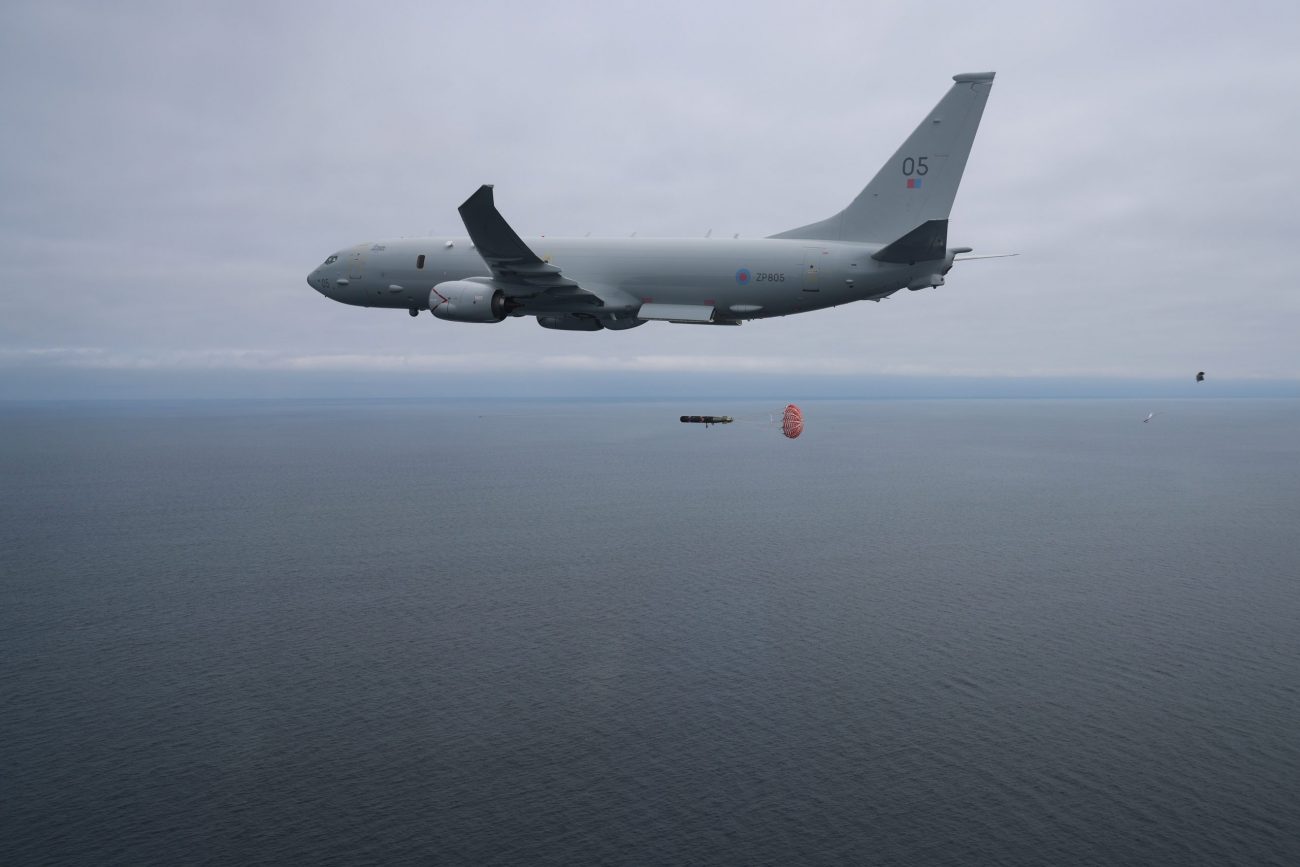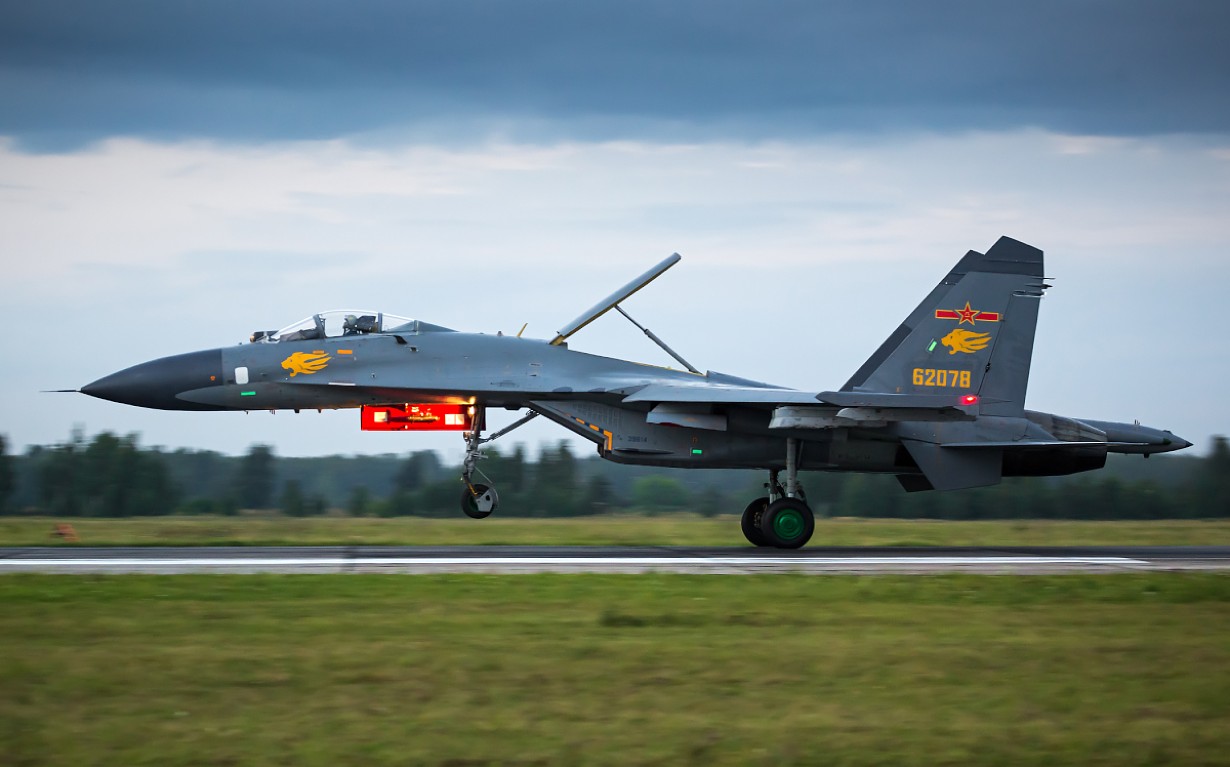With the Chinese military drills in full force near the self-ruled Taiwanese Island, the Chinese military reportedly monitored a P-8A maritime reconnaissance aircraft flying over the Taiwan Strait yet again.
On July 13, as China conducted a third day of continuous military drills to the south of the island that began earlier this week, Chinese fighter planes watched the US Navy patrol plane fly across the contested Taiwan Strait, which China continues to claim as its sovereign territory.
Asserting that it “has sovereignty, sovereign rights, and jurisdiction” over the Taiwan Strait, China regularly expresses outrage over US military activities across the narrow strait, often conducted by warships but also occasionally involving surveillance and reconnaissance aircraft.
The US Navy’s seventh fleet stated that the P-8A Poseidon maritime patrol and reconnaissance plane, also employed for anti-submarine missions, was reportedly in international airspace as it passed across the strait. The US, Taiwan, or its regional allies refuse Chinese claims of sovereignty over the strait.
The fleet said, “By operating within the Taiwan Strait by international law, the United States upholds the navigational rights and freedoms of all nations.” On a more regular basis, the US Navy undertakes Freedom of Navigation Operations (FONOPs) in the waterway to Chinese disenchantment.
US Navy plane flies through Taiwan Strait, China carries out more drills https://t.co/hfZpKmR4nN pic.twitter.com/yZrFW14fHh
— Reuters World (@ReutersWorld) July 13, 2023
The Chinese military called the flight “public hype” and said it sent fighters to watch and warn the American aircraft, a typical Chinese response to US military activities in the Strait and the South China Sea.
However, the timing of the US aircraft’s flight over the strait is significant given that the Chinese launched unexpected drills near the island on July 11 when 32 Chinese air force planes had crossed the median line. Moreover, four nuclear-capable H-6 bombers flew to Taiwan’s south to participate in the drills.
The second day of the drills saw several navy ships and a large group of warplanes, including fighter jets and bombers, flying toward Taiwan.
In fact, on the second day, Taiwan detected 30 Chinese aircraft over the sea, including J-10 and J-16 fighters. Out of these, at least 23 reportedly crossed the median line that previously acted as a security buffer.
In response to the flight undertaken by the US P-8A aircraft, the People’s Liberation Army’s Eastern Theater Command said in a statement on its WeChat account: “Troops in the theater are always on high alert and will resolutely defend national sovereignty and security as well as regional peace and stability.”
The PLA aircraft conducted surveillance on a P-8A aircraft from the US and engaged in long-range aerial reconnaissance training. 4 PLAN vessels also conducted joint combat patrol.
— 國防部 Ministry of National Defense, R.O.C. 🇹🇼 (@MoNDefense) July 13, 2023
The Taiwanese military ministry reported that on July 13, Chinese warplanes and warships conducted a third day of exercises to the island’s south, and those 26 aircraft, including sophisticated J-16 and Su-30 fighters, were seen flying out to sea and “responding to” the American Poseidon.
According to the ministry, Taiwan’s military kept watch while the US aircraft flew southward while staying within the strait’s median line. However, while there was no engagement, there is a slight possibility that Chinese fighter jets could have had an encounter with the US recon plane.
In the past year, with China’s growing military activity near Taiwan and the contested South China Sea and an intensified US bid to counter that aggression with its freedom operations, the military encounters between the two sides have intensified. The P-8 Poseidon definitely has more experience engaging with Chinese warplanes than any other in the US inventory.
Encounters Between Poseidon & Chinese Fighters
In June 2022, the Australian Defense lodged a formal complaint with China over a Chinese warplane engaging in a dangerous interception of the P-8A maritime reconnaissance aircraft over the South China Sea, as previously reported by EurAsian Times.
At the time, the Australian Defense Department said that “a RAAF P-8 maritime surveillance aircraft was intercepted by a Chinese J-16 fighter aircraft during a routine maritime surveillance activity in international airspace in the South China Sea region.”
Australian Defense Minister Richard Marles said that the Chinese aircraft “flew very close to the side of the [Australian] P-8 maritime surveillance aircraft” and then “released flares.” Military aircraft typically discharge flares or chaff as a deliberate countermeasure to deceive missiles, but sabotaging an aircraft while in flight is also possible.

Marles told the media: “The J-16 accelerated and cut across the nose of the P-8, settling in front of the P-8 at a very close distance. At that moment, it released a bundle of chaff, which contained small pieces of aluminum, some of which were ingested into the engine of the P-8 aircraft. Quite obviously, this is very dangerous.”
Chinese analysts, on their part, defended the Chinese J-16’s interception and accused the RAAF of close-in reconnaissance and provocative activities.
In a more recent incident, in February 2023, media reports indicated that a Chinese J-11 fighter jet with four air-to-air missiles intercepted an American P-8 Poseidon patrol aircraft over the South China Sea. Incidentally, the event occurred while the US media journalists were aboard an American aircraft on a surveillance mission in the South China Sea.

During this incident, a Chinese J-11 fighter allegedly followed a US P-8 Poseidon maritime patrol plane for over an hour. A Chinese ground station initially sent an alert to the American military aircraft.
Soon after, a Chinese J-11 fighter jet positioned itself to intercept the US plane within 500 feet of its port side. The Chinese fighter jet was so close to the American journalists that they could see the red star on the J-11’s tail fins and its weaponry.
In response to the Chinese warning, the P-8 crew responded that the aircraft was operating within international airspace. “No approaching anymore, or you will pay full responsibility,” the Chinese ground station retorted.
Then, in late April, China’s People’s Liberation Army scrambled fighters to monitor a US Navy P-8A Poseidon that flew over the Taiwan Strait. At the time, the PLA’s Eastern Theater Command spokesperson, Col. Shi Yi, called the aircraft’s transit “provocative.”
“In the recent period, US warships and planes have frequently carried out provocative actions, fully proving that the US is a disruptor of peace and stability in the Taiwan Strait and a creator of security risks in the Taiwan Strait,” Shi said.
In addition, in March this year, a report published by a Beijing-based think tank South China Sea Strategic Situation Probing Initiative (SCSPI), stated that Washington maintained a high level of close-in reconnaissance operations in the South China Sea and sent ships and aircraft through the Taiwan Strait.
SCSPI data showed that in 2022, the US conducted approximately 1,000 reconnaissance flights over the South China Sea, many of which were conducted within 13 nautical miles of China’s maritime territorial baseline. Twelve nautical miles out from the baseline is the approximate limit of a territorial sea.
Besides the RC-135 aircraft that almost collided with a PLAAF J-11 fighter jet, the P-8 reconnaissance aircraft is the most popular visitor to areas surrounding China. So, it may not be uncommon for PLA fighter jets to monitor US aircraft.
However, making a flight during a Chinese military exercise has been touted as a move aimed at signaling more than anything else.
- Contact the author at sakshi.tiwari9555 (at) gmail.com
- Follow EurAsian Times on Google News




